This simple recipe shows you exactly how to make the perfect pie dough with just a few ingredients. Homemade Pie Crust is an easy recipe for a flaky, buttery crust that’s perfect for any pie – sweet or savory! With Thanksgiving coming up, now is the perfect time to try the best homemade pie crust recipes and make sure your pie turns out irresistibly delicious.
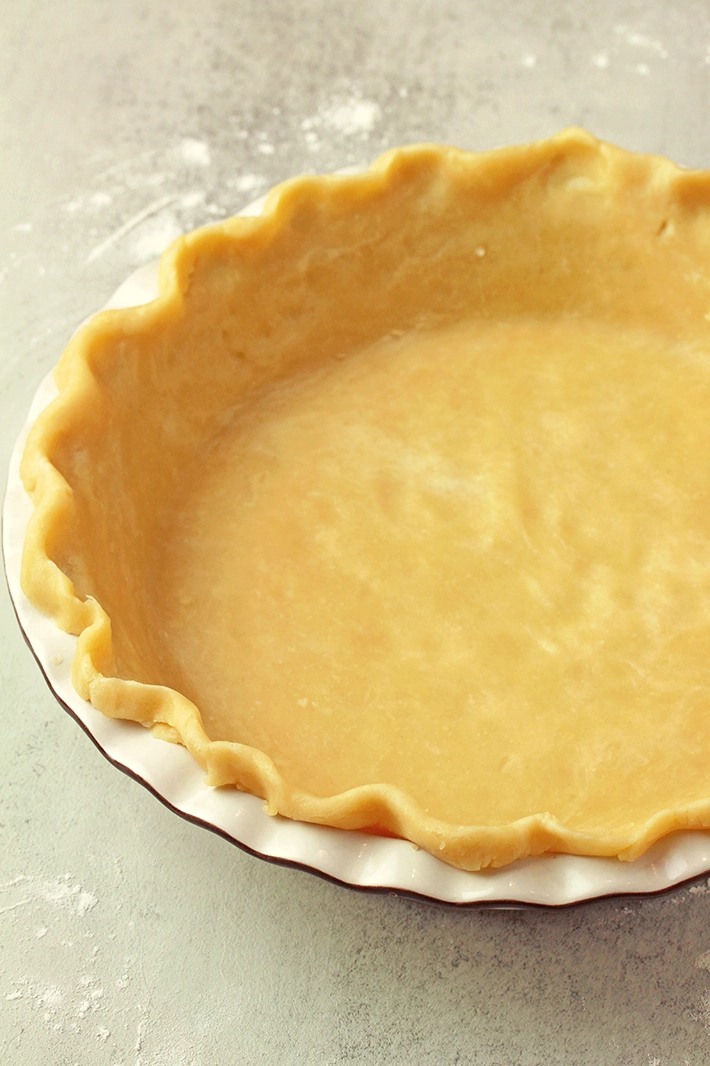
This step-by-step guide has everything you need and will make preparation easier. This Homemade Pie Crust bakes beautifully, whether you fill it with pumpkin, apple, cherries, mixed berries, a curd filling, or something else. Let’s go step-by-step to the perfect Homemade Pie Crust you’ll love.

Grab the ingredients and let’s get started!
Ingredients:
- all purpose flour
- granulated sugar
- salt
- unsalted butter
- ice water
How to Make a Homemade Pie Crust – Step-by-Step Instructions
Mix the dry ingredients
Place the flour, sugar, and salt in a food processor. Pulse to combine.
Cut in the butter
Add cold, cubed butter and pulse until the mixture becomes coarse and crumbly, with pea-sized pieces of butter throughout.
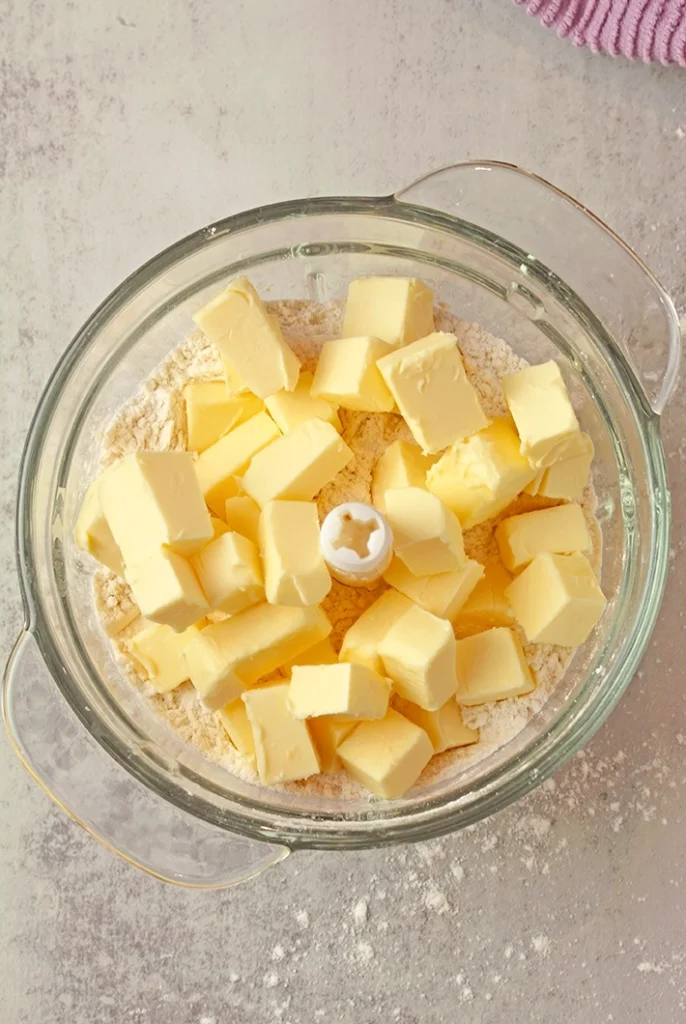
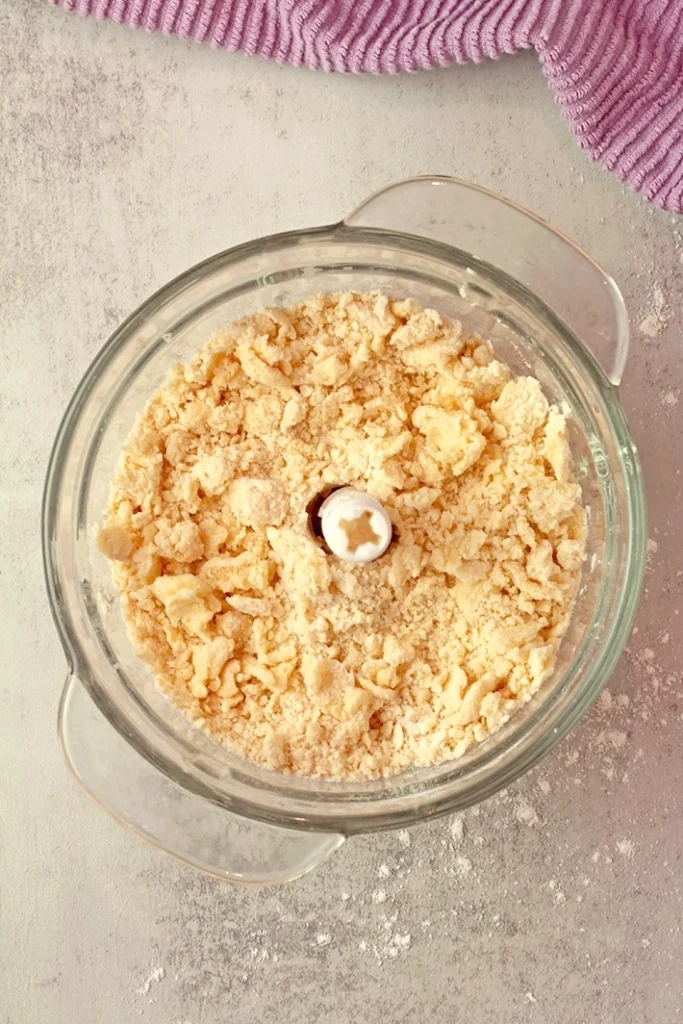
Add the ice water
Sprinkle 3 tablespoons of ice water over the mixture and pulse just a few times to work the water into the dough. Pinch a small amount of dough between your fingers—if it holds together, it’s ready.
If the mixture looks dry and crumbly, add a tablespoon of water at a time and give it a quick pulse after each addition. Keep going until the dough holds together when you press it, but isn’t wet or sticky.”
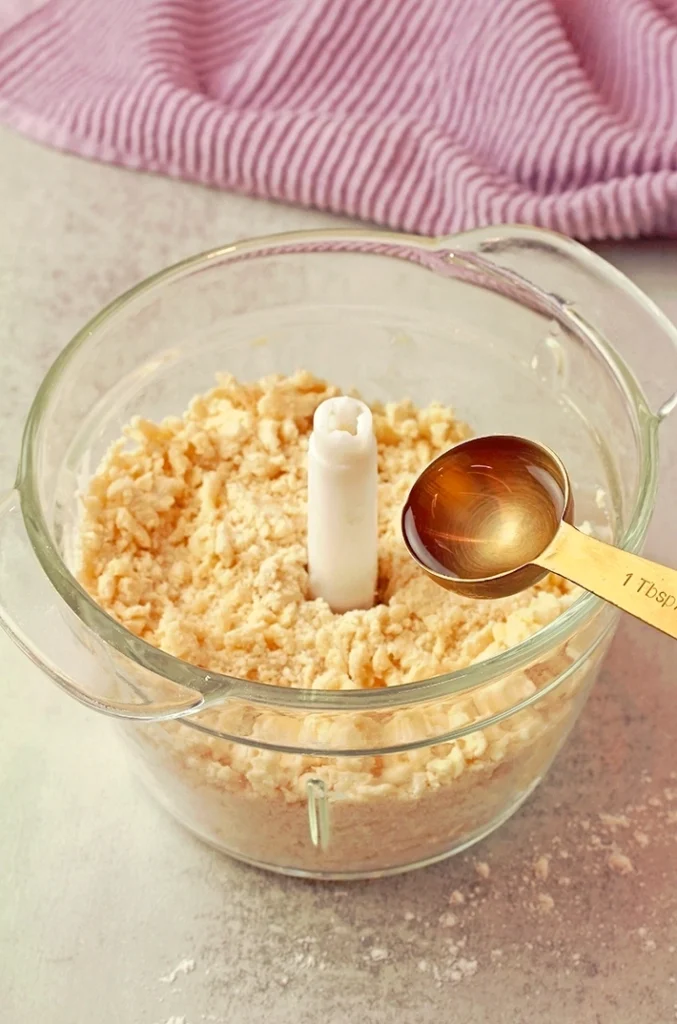
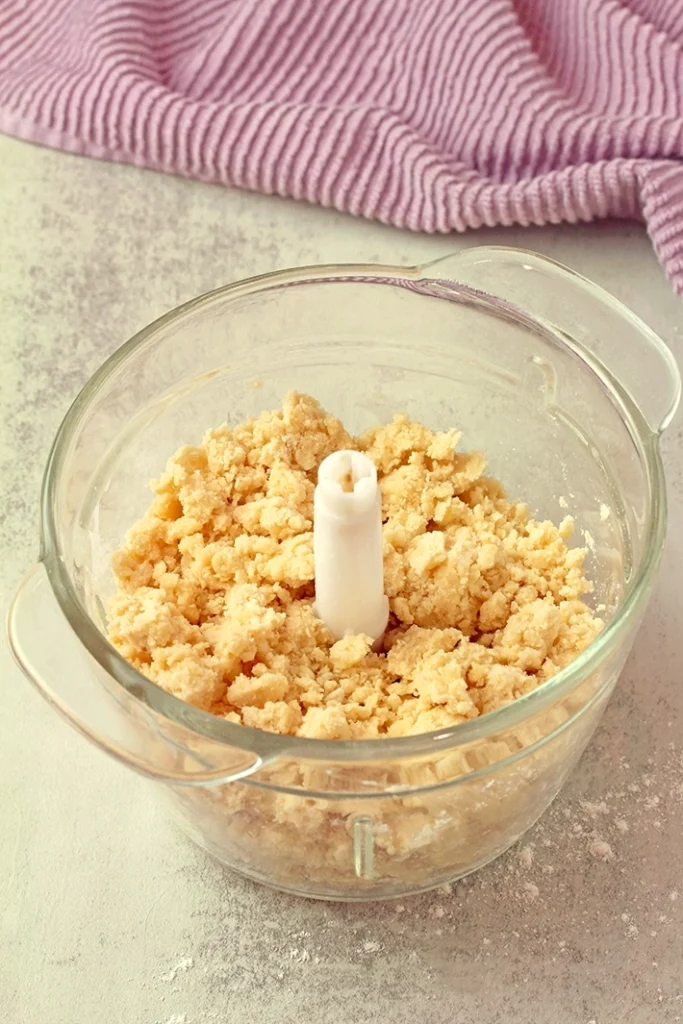
Shape the dough
Transfer the dough to your work surface, then gently form it into a ball with your hands. Do not knead the dough! Cut it into 2 equal parts, shape each into a disk about 1/2 inch thick, and wrap each one tightly in plastic wrap.

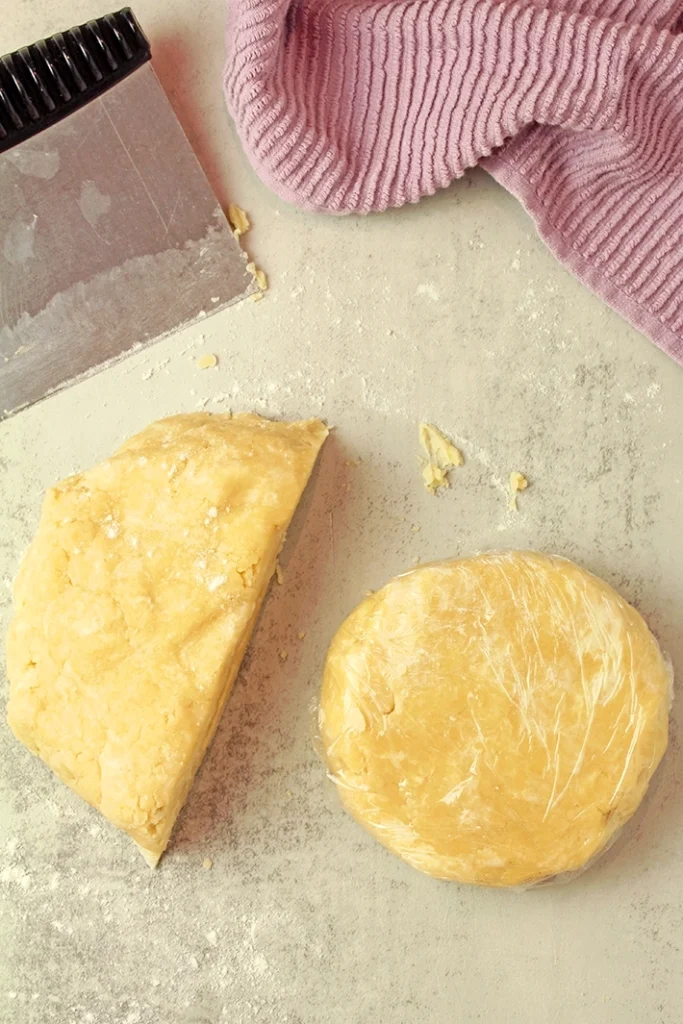
Chill the dough
Chill for at least 1 hour before using.
Roll it out
Lightly flour your work surface, then place the chilled dough on top. Roll it out with a rolling pin into a circle about 12 inches (30 cm) in diameter. If the dough sticks, sprinkle a little more flour—but don’t overdo it!
Carefully roll one edge of the dough onto the rolling pin, lift it up, and gently unroll it over the pie dish. There’s no need to cut the excess dough; instead, tuck it underneath the edges and crimp the rim with your fingers.
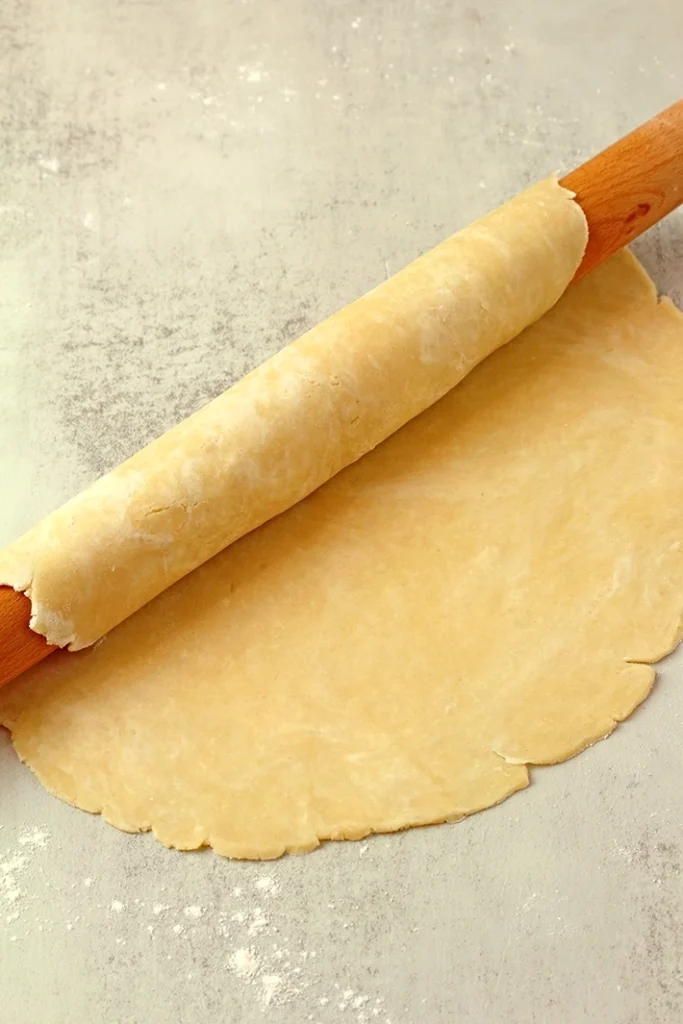
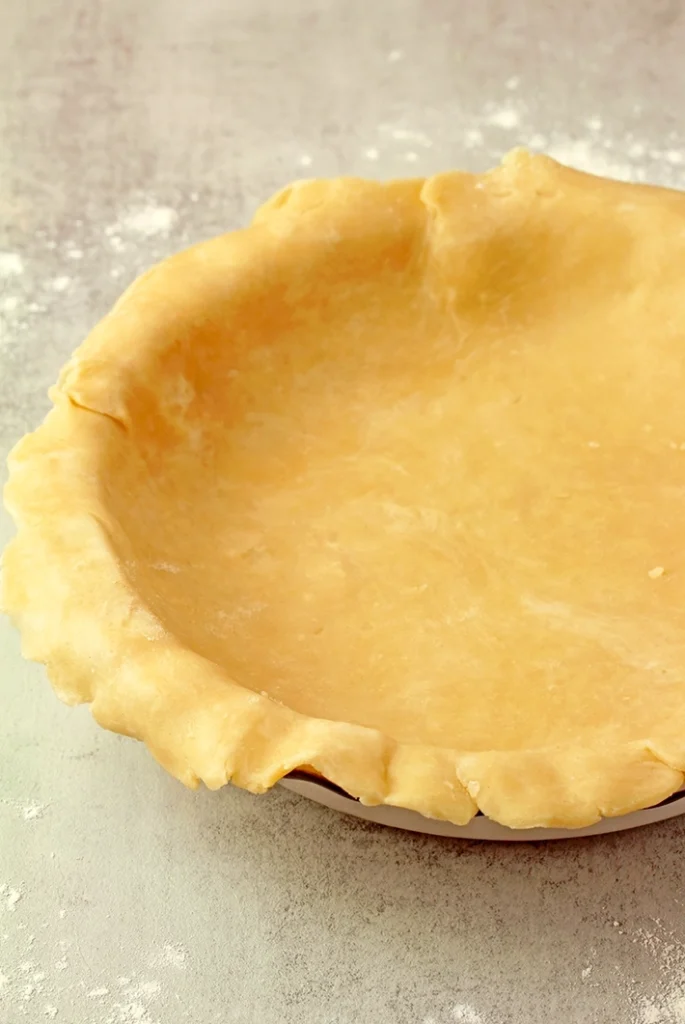
Chill again
Place the crust in the refrigerator for 15 minutes before baking. This helps the dough relax and ensures the pie crust bakes evenly.
Baking
Some recipes call for pre-baking the crust before adding the filling. Line the crust with parchment paper, then fill it with pie weights (you’ll need about 2 packages of weights). You can also use dried beans or rice instead of weights. This prevents the crust from puffing up.
Bake at 220 degrees F or until the edges start to brown, about 17 minutes, then remove the weights and parchment paper. Prick the bottom of the crust several times with a fork and bake for another 5 minutes, or until the bottom is lightly golden. Let it cool to room temperature.
Pro tip:
It’s best to follow the recipe for the pie you’re making and bake the crust for the amount of time it specifies. Some recipes call for an unbaked crust, others for a partially baked crust, and some require a fully baked crust.

Tips for Success:
- Use cold ingredients. Cold ingredients create a flaky texture! This keeps the butter from fully blending into the flour—those little bits of butter in the dough are what create a flaky crust.
- Don’t overwork the dough! The more you pulse it, the more the butter blends into the flour, and those small butter pieces are important. Overworking also develops more gluten, which can make your crust tough.
- Chilling before baking is very important! Chilling helps make the dough easier to roll out later.
- Roll gently and evenly. Use light, even pressure and rotate the dough a quarter turn every few rolls to help you form a circle. This also prevents the dough from sticking to the work surface.
- Chilling the dough again before baking helps keep the butter firm.
- If you notice the edges of the crust darkening before the pie is done, shield them with a pie crust protector or aluminum foil.
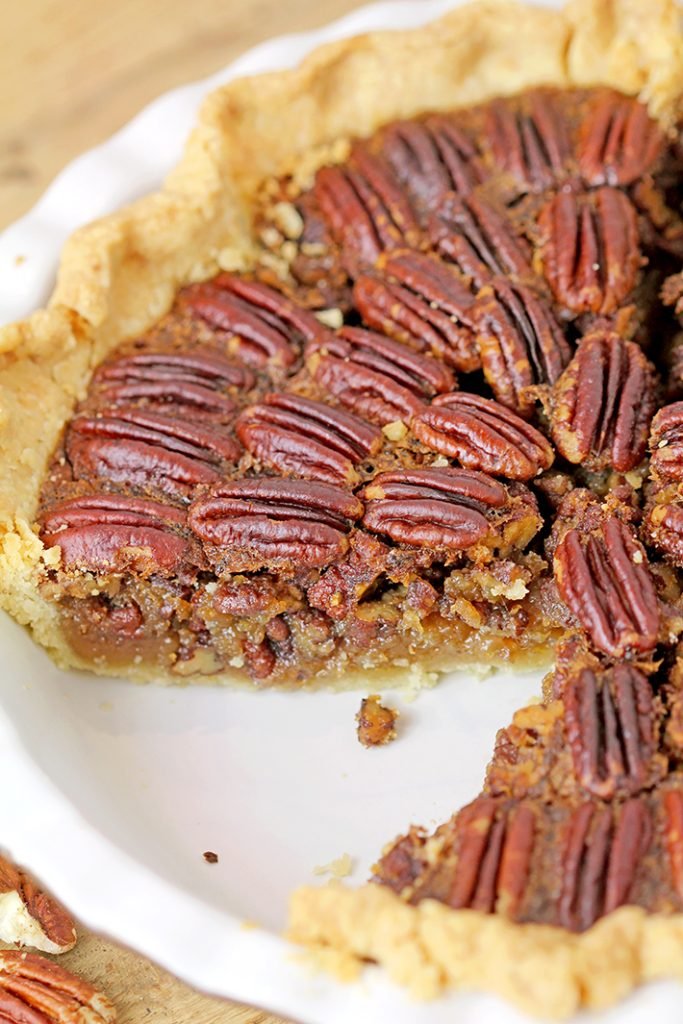
FAQs – Homemade Pie Crust
Can I make it ahead?
Yes, store in the fridge for up to 3 days or in the freezer for up to 3 months.
Why is my crust dry?
Too much mixing or too much flour. Don’t overmix the dough—follow the recipe instructions exactly. The best way to measure flour accurately is with a kitchen scale. If you don’t have one, you can measure with cups like this: stir the flour with a spoon, then spoon it into the cup and level off the top.
Don’t scoop the flour directly with the cup! This compresses the flour and you’ll likely end up with too much, resulting in a dry crust.
Why isn’t my crust flaky?
You probably worked the dough too much. Don’t over-pulse. In a properly made dough, you should see small chunks of butter – these are future flakes!
This recipe makes 2 pie crusts, perfect for a double-crust pie. If you only need one crust, freeze the second disk that you haven’t rolled out.
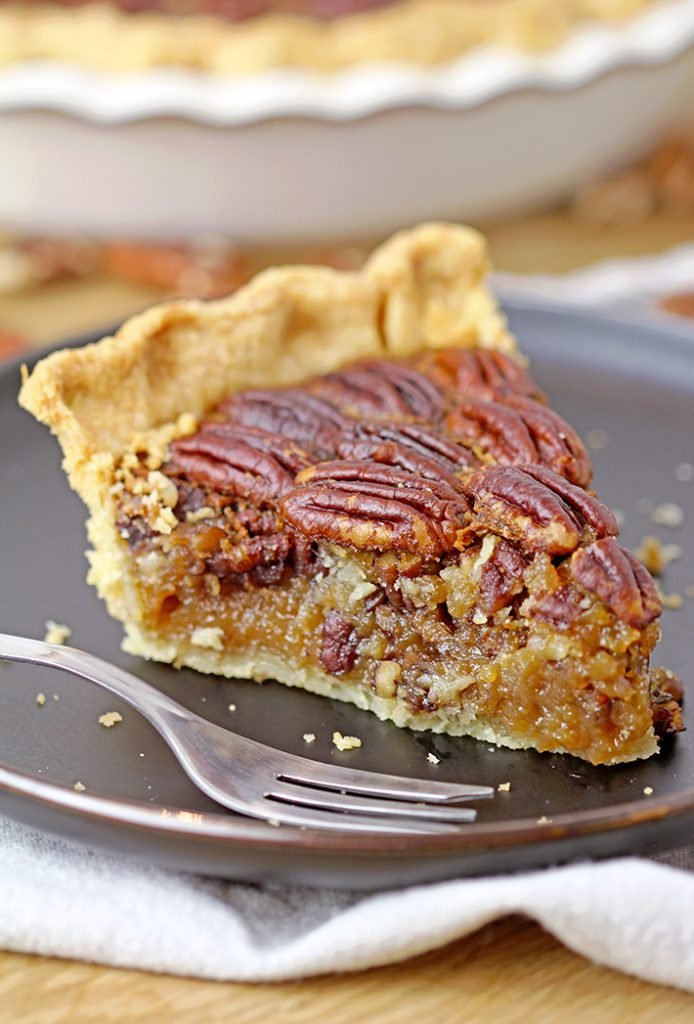
Pie lovers, you’re in the right place! A great homemade pie starts with the crust. Make it easily and simply, and enjoy your pie.
My favorite pies with crust:
Without crust:
If you enjoyed this recipe, don’t forget to leave a review and follow me on Pinterest, Facebook, and Instagram. Also, fill out the subscription form below to get new recipes for free.
Happy baking and tasting!

Homemadre Pie Crust
Homemade Pie Crust is an easy recipe for a flaky, buttery crust that’s perfect for any pie – sweet or savory!
Ingredients
- 2 1/2 cups ( 313 g ) all purpose flour
- 1/2 tablespoon granulated sugar
- 1/2 teaspoon salt
- 1 cup ( 226 g ) unsalted butter, chilled and cubed
- 3-5 tablespoons iced water
Instructions
To Make the Crust:
- In a food processor, combine the flour, sugar, and salt. Pulse until mixed.
- Add cold, cubed butter and pulse until the mixture becomes coarse and crumbly, with pea-sized pieces of butter.
- Sprinkle 3 tablespoons of ice water over the mixture and pulse just a few times to incorporate the water. Do not over-pulse!
- If the mixture looks dry and crumbly, add a tablespoon of water at a time and give it a quick pulse after each addition. Keep going until the dough holds together when you press it, but isn’t wet or sticky.”
- Place the dough on a work surface and gently form it into a ball. Do not knead the dough! Cut it into 2 equal portions and shape each into a disk about ½ inch thick. Wrap each disk tightly in plastic wrap.
- Chill the dough for at least 1 hour before using.
- Lightly flour your work surface, then place the chilled dough on it. Roll out with a rolling pin into a circle about 12 inches (30 cm) in diameter. If it sticks, lightly sprinkle it with more flour—but don’t overdo it!
- Carefully roll one edge of the dough onto the rolling pin, lift it, and gently unroll it over the pie pan. There’s no need to trim the excess—tuck it under the edges and crimp with your fingers.
- Refrigerate the crust for 15 minutes before baking.
Baking
- Line the crust with parchment paper, then fill it with pie weights (you’ll need about 2 packages). If you don’t have pie weights, dry beans or rice will work. This prevents the crust from puffing up.
- Bake at 220 °F or until the edges are lightly browned, about 17 minutes, then remove the weights and parchment paper. Prick the bottom a few times with a fork and bake for another 5 minutes, or until the bottom is lightly golden. Let cool to room temperature.
Pro Tip
It’s best to follow the instructions for the specific pie you’re making. Some recipes call for an unbaked crust, some for a partially baked crust, and others for a fully baked crust.
Notes
- Use cold ingredients. Cold ingredients create a flaky texture! This keeps the butter from fully blending into the flour—those little bits of butter in the dough are what create a flaky crust.
- Don’t overwork the dough! The more you handle it, the more the butter melts and blends into the flour, and those small butter pieces are important. Overworking also develops more gluten, which can make your crust tough.
- Chilling before baking is very important! Chilling helps make the dough easier to roll out later.
- Roll gently and evenly. Use light, even pressure and rotate the dough a quarter turn every few rolls to help you form a circle. This also prevents the dough from sticking to the work surface.
- Chilling the dough again before baking helps keep the butter firm.
- If you notice the edges of the crust darkening before the pie is done, shield them with a pie crust protector or aluminum foil.
- Store in the fridge for up to 3 days or in the freezer for up to 3 months.



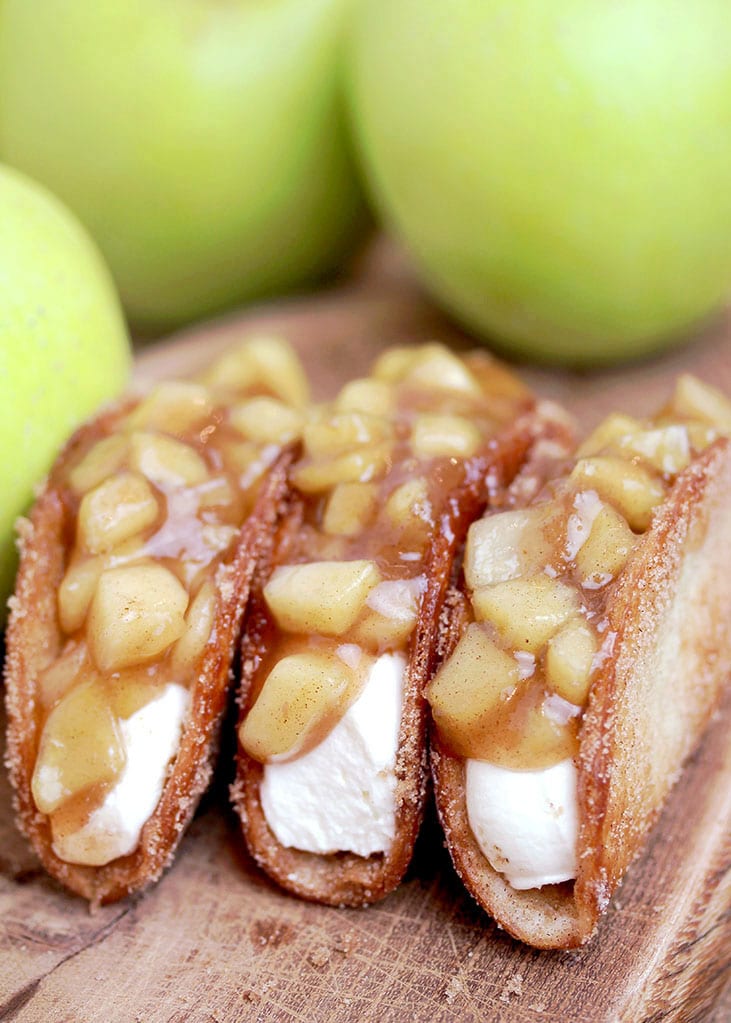

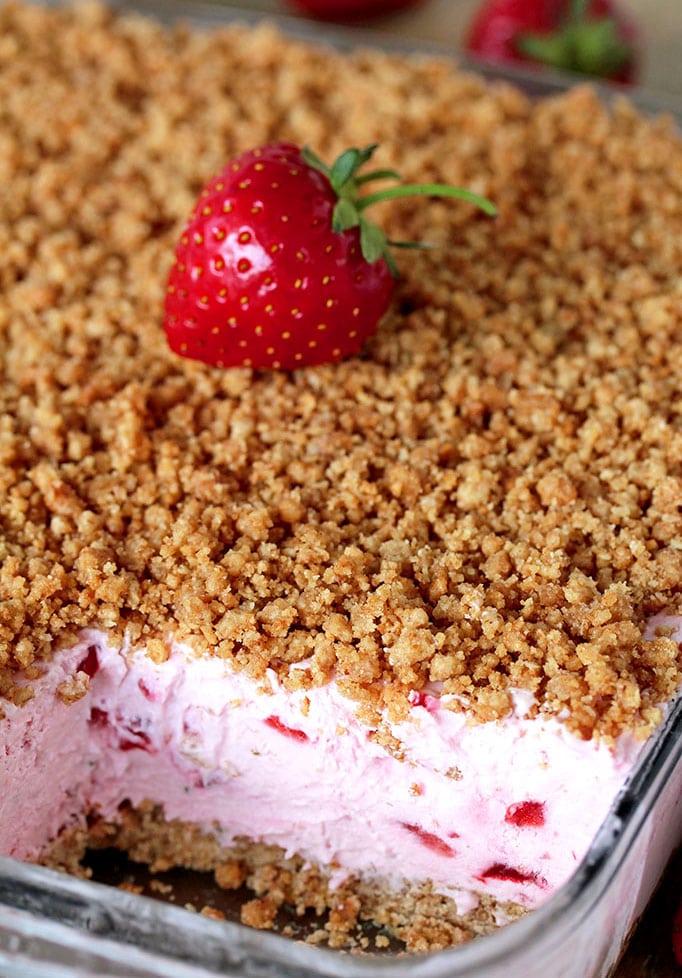
Leave a Reply